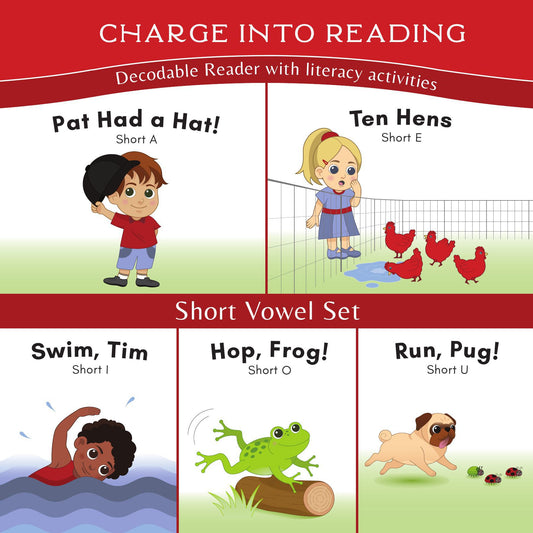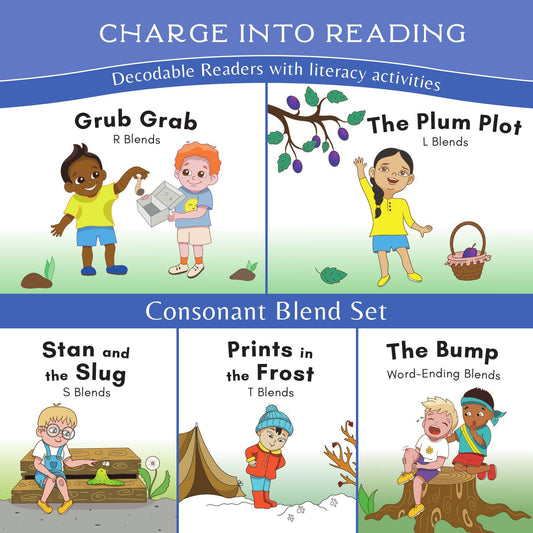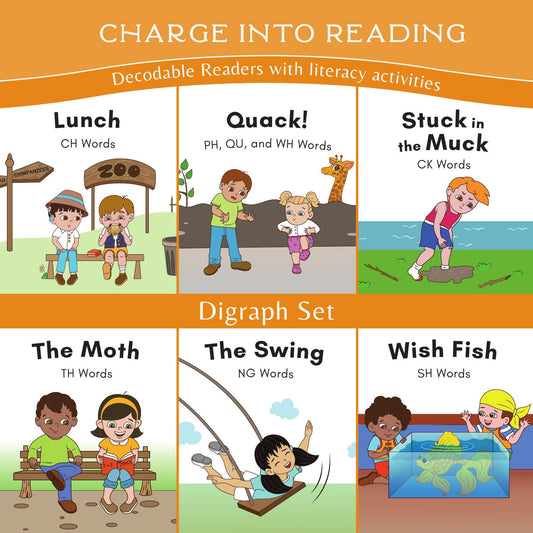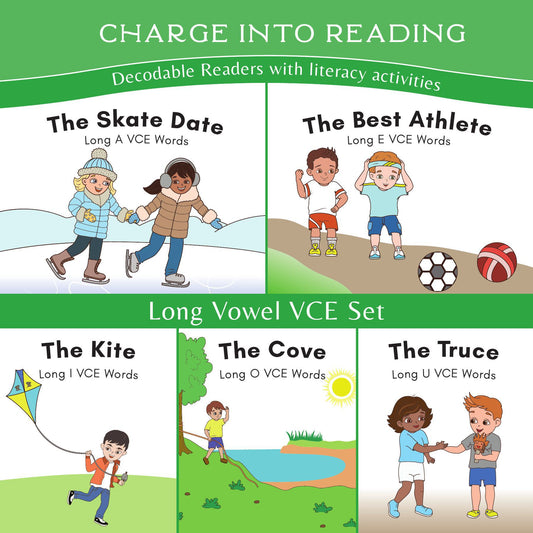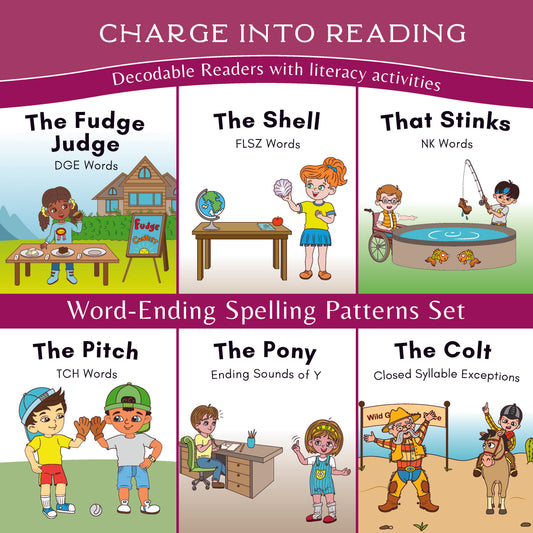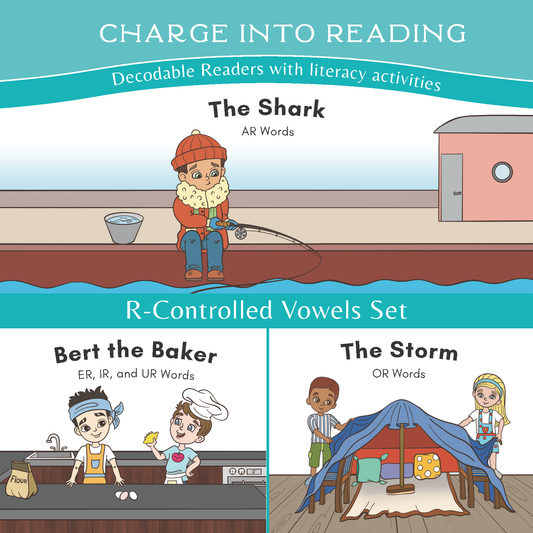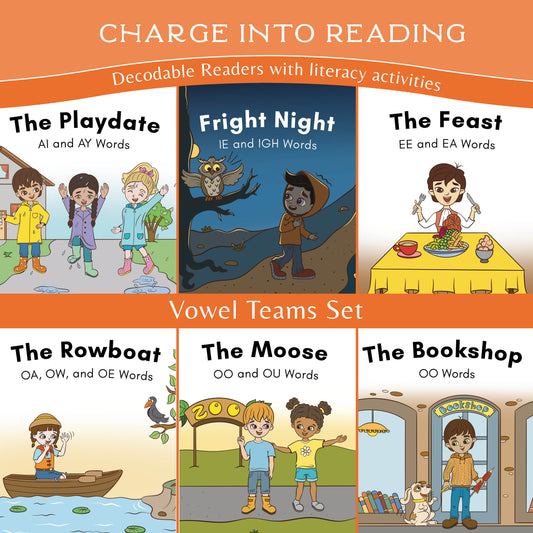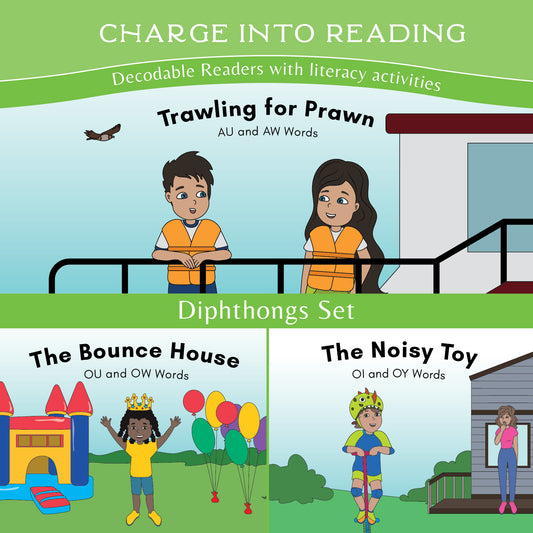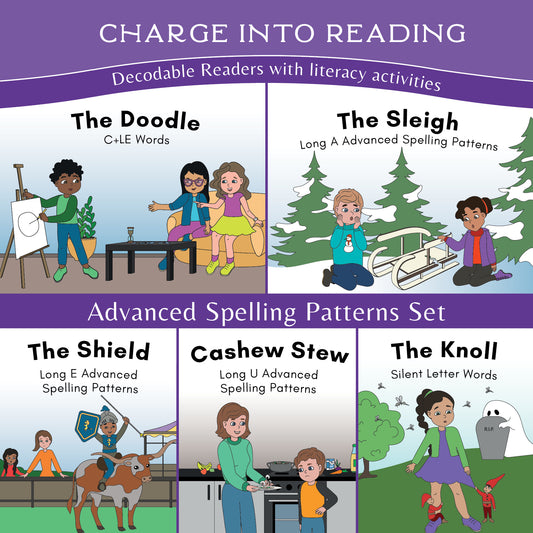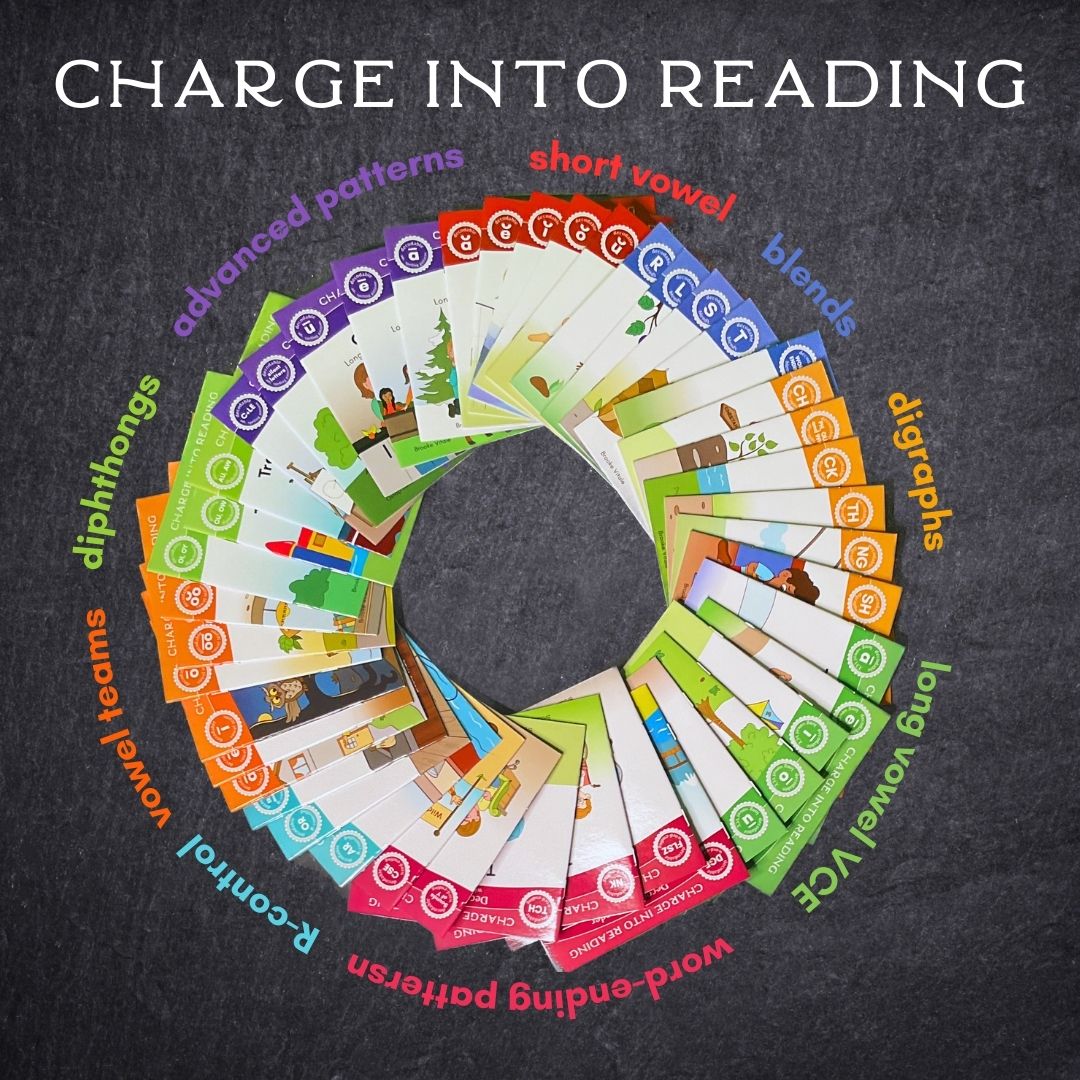
Charge into Reading Decodable Reading System
Grounded in the Science of Reading and designed in consultation with Orton-Gillingham trained literacy specialist Marisa Ware, the Charge into Reading Decodable Readers take the guesswork out of learning to read!
Unlike other decodable books, which group new sounds together, each book in the Charge into Reading Decodable Reader series introduces one sound or spelling pattern at a time, building reading confidence.
Compelling storylines paired with a strict scope and sequence make for a series that children won't just be ABLE to read, but that they will actually WANT to read.
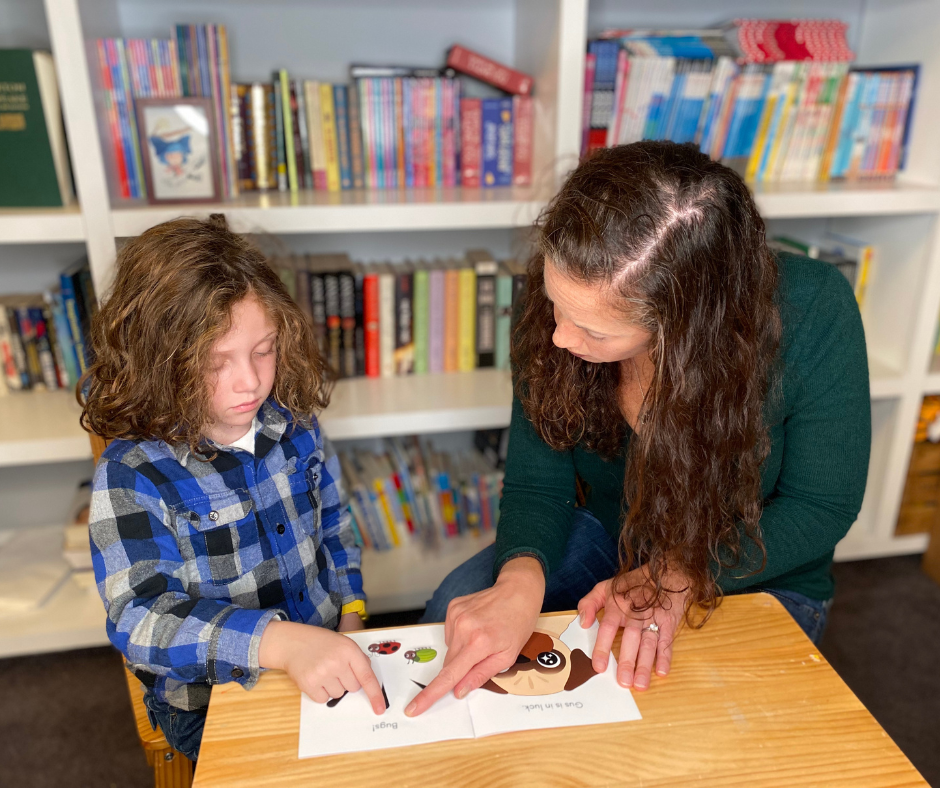
What Is Decoding?
For some parents, the idea of decoding may seem confusing or overwhelming. But it doesn’t need to be. Decoding is simply the ability to break a word down into the sounds made by each letter (or group of letters) in the word, and then string those sounds together to form a full word.
A child who is decoding the word bed, for example, would break the word into its three sounds (also known as phonemes): /b/ /ĕ/ /d/. Once they have identified all three sounds, they would then string them together to say the word bed.
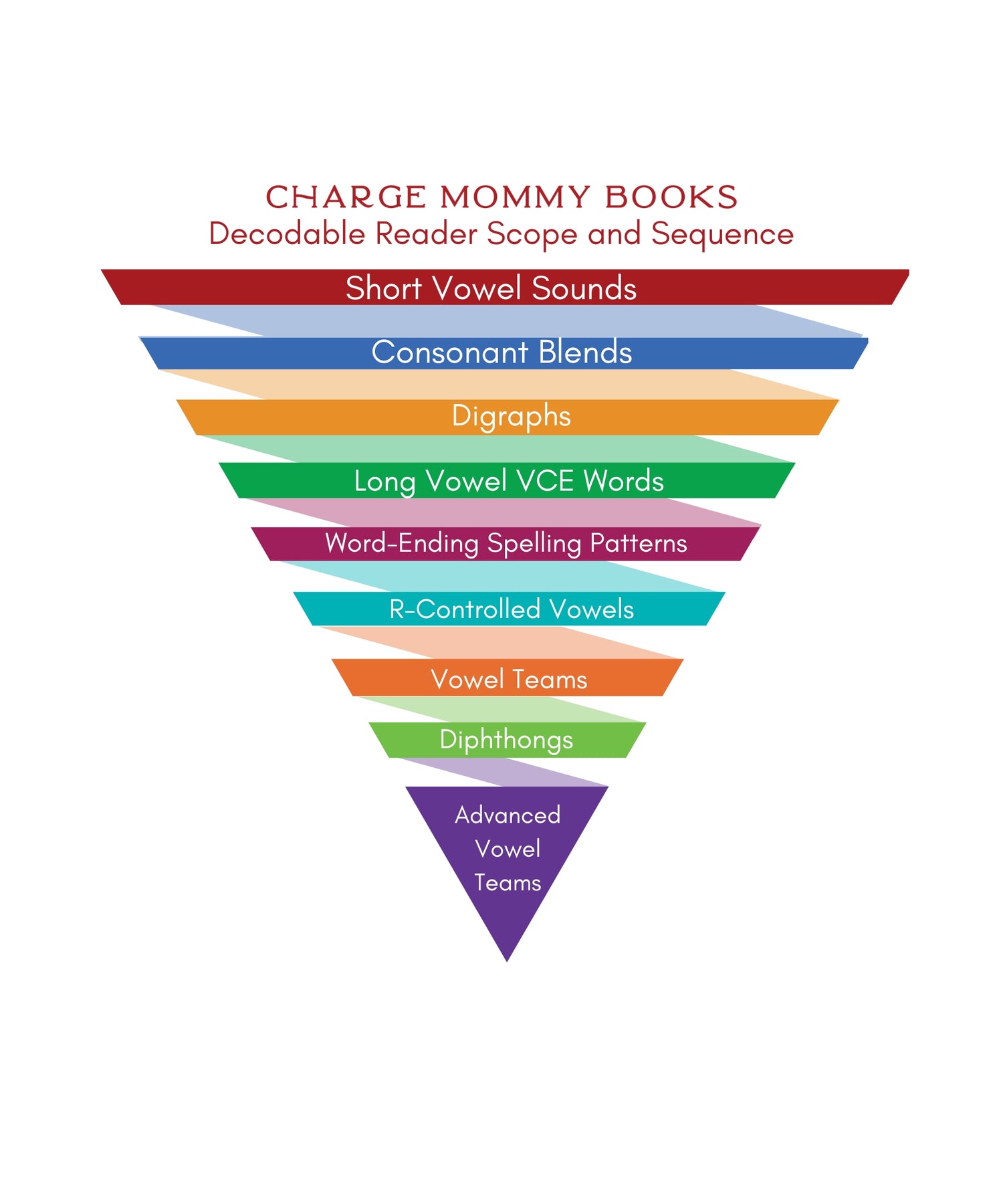
What Is a Scope and Sequence?
In order to decode well, a reader must know the sounds made by all of the letters and combinations of letters. But this isn’t something taught all at once. Rather, children learn one sound at a time, with each new skill building on the ones that were taught before. The order in which these sounds is taught is called a scope and sequence.
A scope and sequence is an organized list of the concepts to be taught (the scope) and the order in which they are organized (the sequence). A proper scope and sequence moves from simple concepts all the way up to advanced skills.

What Are Decodable Readers?
A decodable reader is a book that contains only the sounds and spelling patterns a child has already learned. When talking about decodable readers, it is important to remember that what is decodable to one child may not be decodable to another child. That is to say, not all children have mastered the same skills. This is what makes a scope and sequence so important. Decodable readers should follow a clear scope and sequence, with each book building on the last, just as the scope and sequence does.
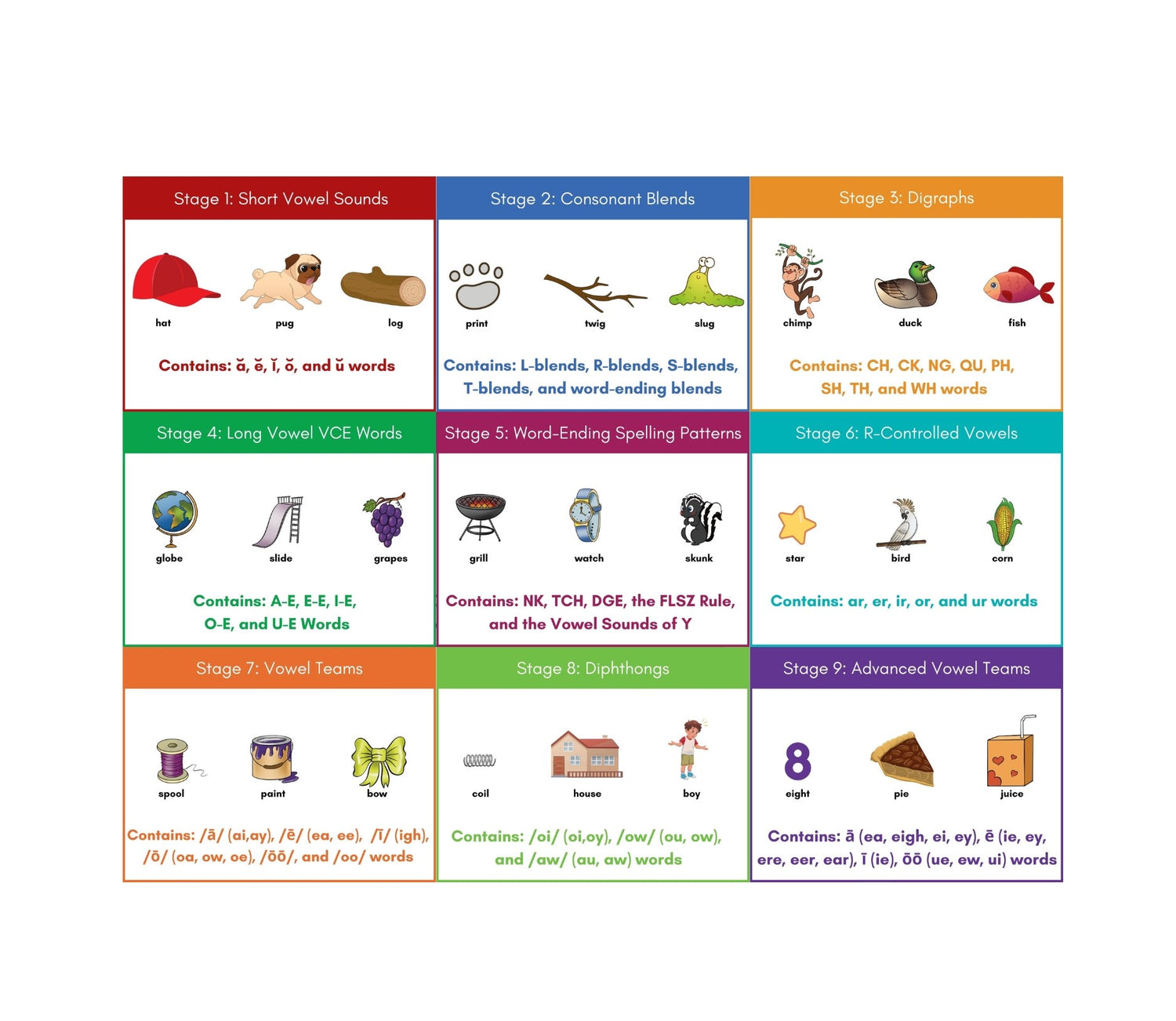
Charge into Reading Scope and Sequence
At its core, both the Charge into Reading Decodable Readers and the Charge into Reading scope and sequence are designed to support the curriculum being taught in schools and at home. The scope and sequence is most closely aligned with the 95 Phonics program and the UFLI Foundations scope and sequence.
Breaking news: As of January 2024, the Charge into Reading books are officially UFLI aligned and listed on the UFLI Foundations decodable text guide!
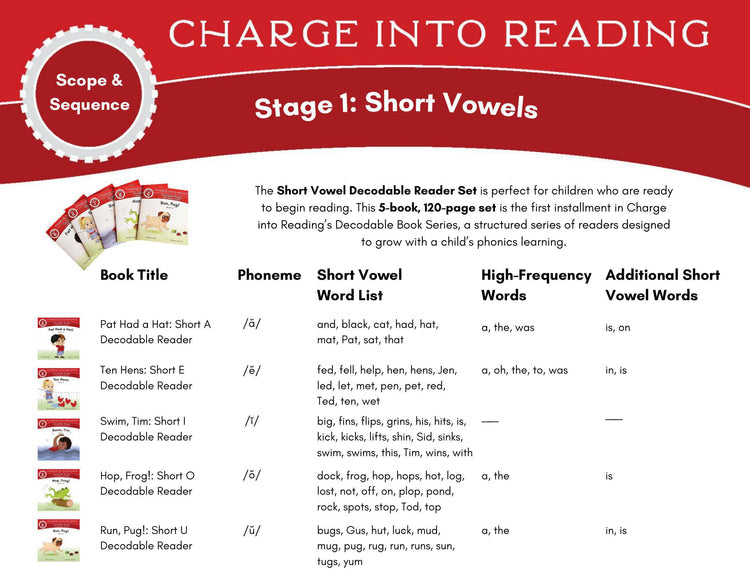
The Charge into Reading scope and sequence begins with one basic assumption: that children have already learned individual letter sounds and are ready to begin blending words together.
The full scope and sequence is available for download and lists not only every book in the Charge into Reading collection but the graphemes and phonemes introduced in each book, as well as every word in every book.
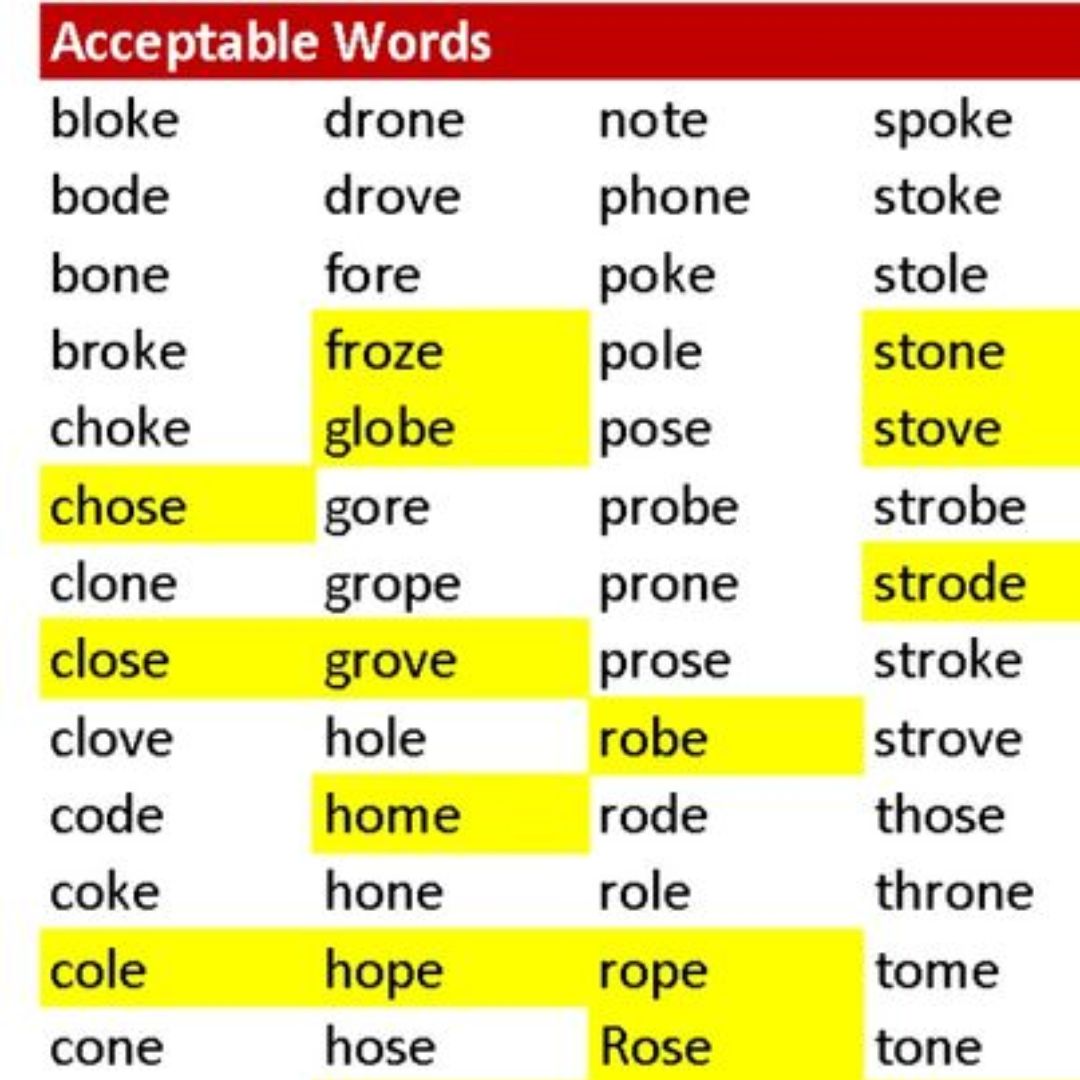
How Do I Write a Decodable Reader
Each book in the Charge into Reading Decodable Reading System begins by finding acceptable words within the book's spelling pattern. Here is an example of the acceptable words within the Long O VCE spelling pattern.
Working with this word list, I strive to create a compelling story using only these words and those children have learned in previous stages of the decodable reading system. Any high-frequency words are called out before the story to prepare parents and teachers for guided reading.
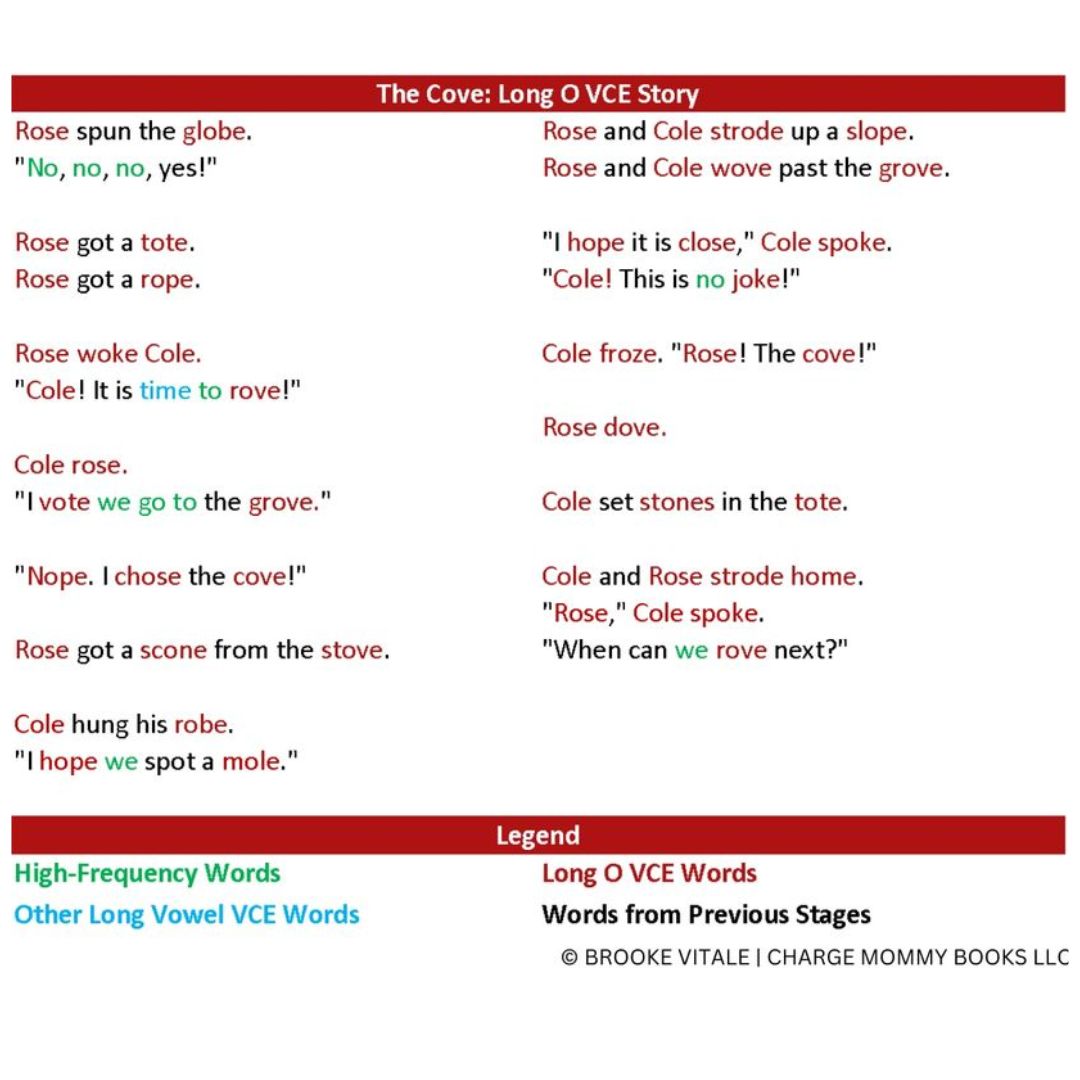
The only exception to our strict adherence to the cumulative nature of these books is our Stage 1 Short
Vowel Decodable Reader Set. Because it is impossible to tell a quality story utilizing only CVC words that feature a single vowel sound, minimal consonant blends and digraphs are included where they fit the specific short vowel sound. These are noted in a word list at the beginning of each book for guided
reading.
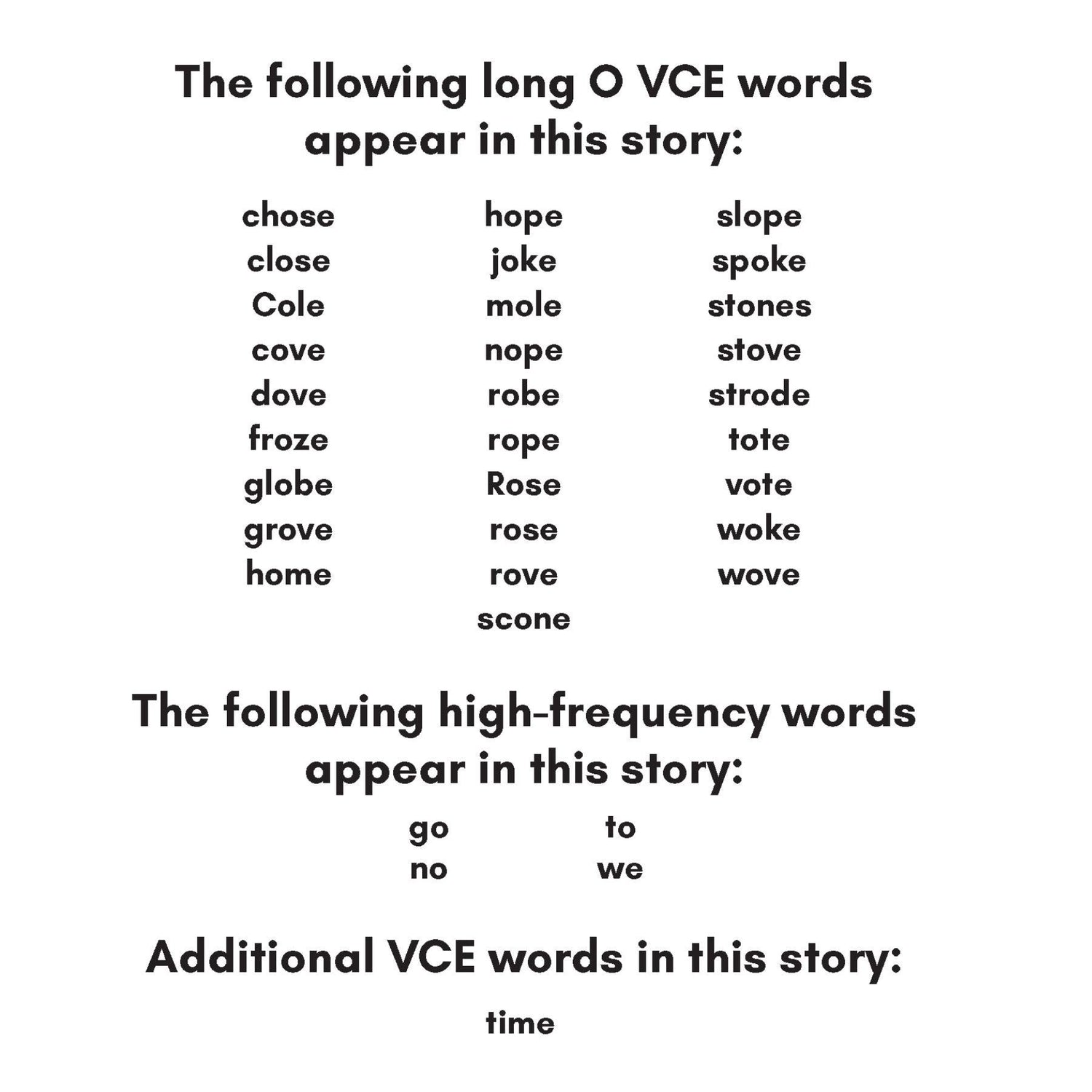
Skill repetition
When learning a new skill, I know how important repetition is. But not repetition of the same word over and over again. Repetition of the skill being focused on, with enough variety to make a new reader think about what they're reading. That’s why I make a point of including as many unique words that fit the skill being taught as possible!
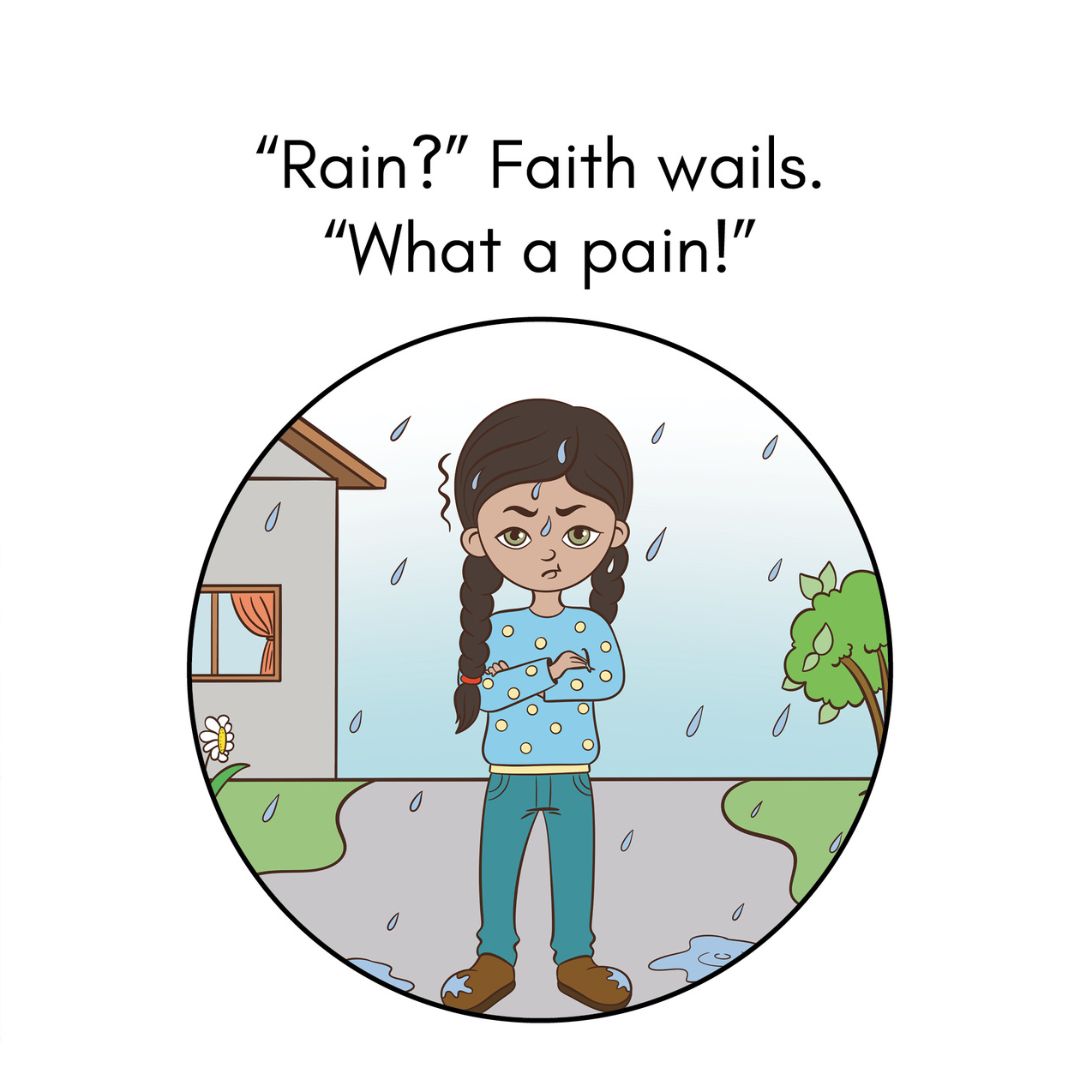
Real Stories
It has been my experience that many books that strive to teach reading lack consistent and enjoyable plots. As an author of hundreds of published children's books and an editor to thousands, I understand how to prioritize story while following the strict rules required by a decodable reading system. The words that appear in each of our decodable readers adhere to the goals of that stage of books without sacrificing plot, grammar, or early sentence structure. Part of learning to read is comprehension and being able to retell the story. Every story I write contains a clear beginning, middle, and end—a problem and a solution. A setting and a main character. All of this is designed to make every child who reads our books not just better at decoding words, but better at reading stories fluently and comprehending what they’ve read.
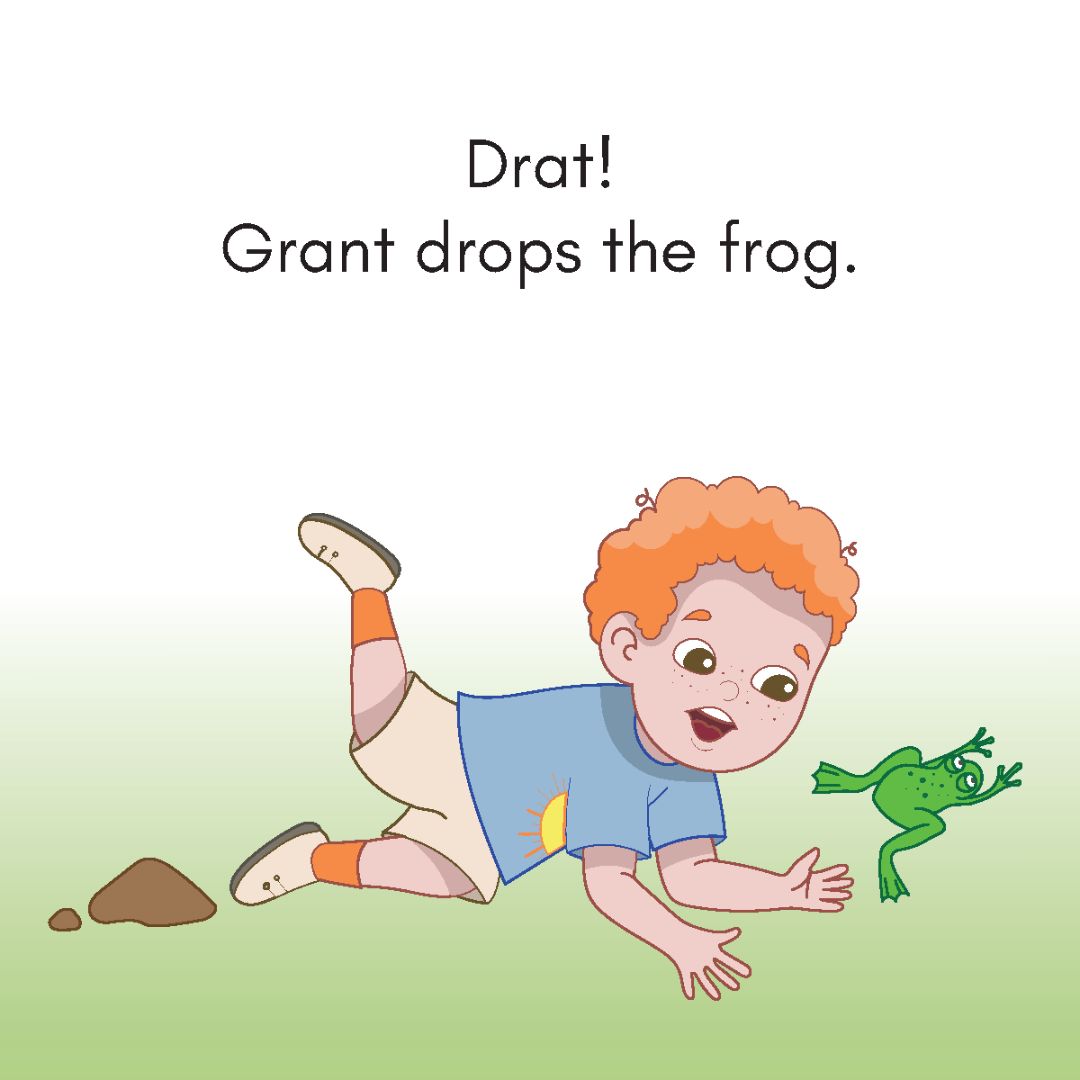
Using Humor to Engage Readers
Children want to laugh. It’s that simple. For too long, decodable text has been deemed “boring.” Not anymore! If a story doesn't make sense, or doesn't make my own kids laugh, I scrap it and start again. And here’s the proof: feedback from real parents and teachers about how their children are enjoying the Charge into Reading books.
